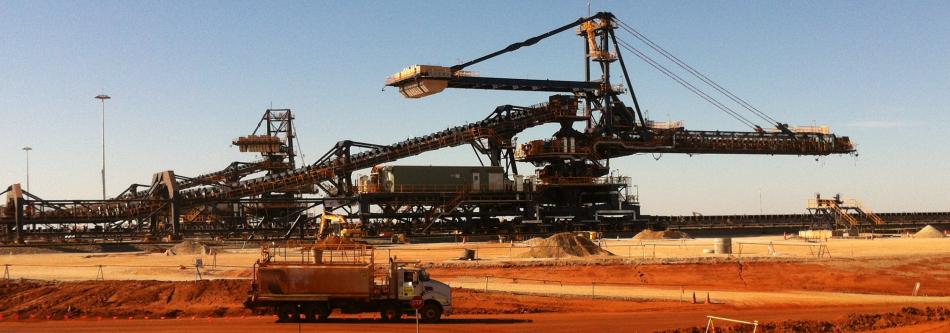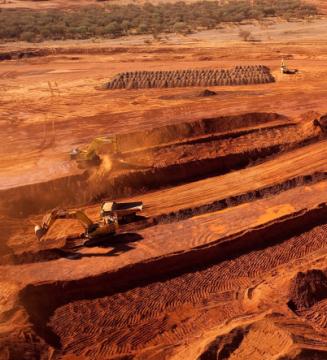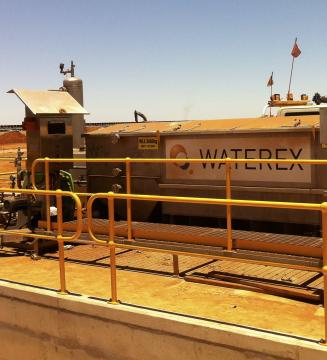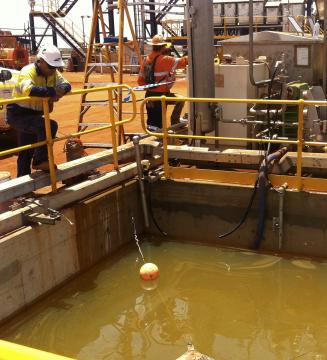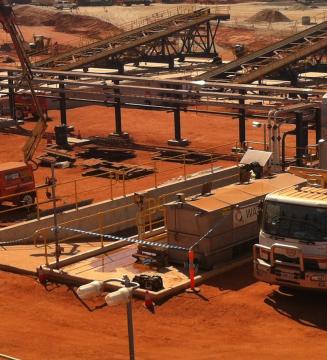Oil and Dust Removal
Waterex Oil Water Separator
The Waterex Oily Water Separators (OWS) offer distinct advantages in that they are readily adapted to problematic or challenging situations. Often the removal of gases or solids in addition to the removal of organics is required. Consequently our plants often generate three outputs, such as solids or sludge, organics and water.
Waterex is able to offer this expanded performance through the use of our modular technology and approach. We can interchangeably use flotation, settling, coalescing plate, vacuum or residual destruction modules. This combination of technologies not only enables higher strip ratios to be realised but can also deliver more efficient oil separation.
Application
The Iron Ore industry uses trains to ship iron ore to port from mine sites across the Pilbara. These trains pick up iron dust in the hot and harsh environment. To extend the life of the trains, they and all other vehicles are regularly washed.
The resulting wash water contains oils, greases and propellants (kerosene, diesel, petrol, etc.) which need to be removed before the water can be reused or returned to the environment.
The flow rate through the separator is 10 m3/hr, 24 hours a day. The separator must remove 2,600 to 4,000 mg/l of entrained oil, grease and propellant under normal conditions. The plant is also designed for peaks up to 10,000 mg/l for short durations, such as when a spill occurs.
The recycled water is reused in the next wash cycle or recycled to other parts of the plant. The recovered organic fractions are retained for recycling.
The Challenge
The Pilbara dust gets into the waste oils while the intense heat drives off the volatile fraction increasing the residue densities. This often results in oil particles with a neutral or near neutral buoyancy in the wash-down liquor.
Conventional plate separators or similar devices will not trap particles with neutral buoyancy. So to effectively remove the oil this lack of buoyancy needs to be addressed.
Entrained dust and solid particles are not always heavy enough to sink to the bottom of the pit or sump. Consequently up to 1000 mg/l of suspended solids (TSS) flow into the separator.
Most importantly the remoteness of the Pilbara means that support services are harder to find. Consequently reliable, independent stand-alone system operation is crucial to success.
The Waterex Approach
Our solution uses a floating skimmer to suck the oil and limited water from the collection pit. This skimmer is anchored to the sidewalls to remain centrally located such that wind from any direction will deliver oil-contaminated liquor to the plant.
Feed enters a quiescent zone in the vessel, allowing solids to settle out of suspension. It then passes through micro bubble flotation to strip neutrally buoyant material, large oil globules and greases. Lastly the liquor flows through the well proven “egg crate” coalescing plate array where the remaining oil globules were removed to reach our high strip ratio target.
The Result
The products off the plant were slime containing most of the non-oil solids, oil with minimal solids entrained plus the product water, which exhibited no sheen.
To prove the efficiency of the skimmer oil spills were tested. These same spills also fully tested the efficiency of the separator. Under all test conditions no “sheen” showed and the result was deemed to be perfect for recycle through the processing plant.

